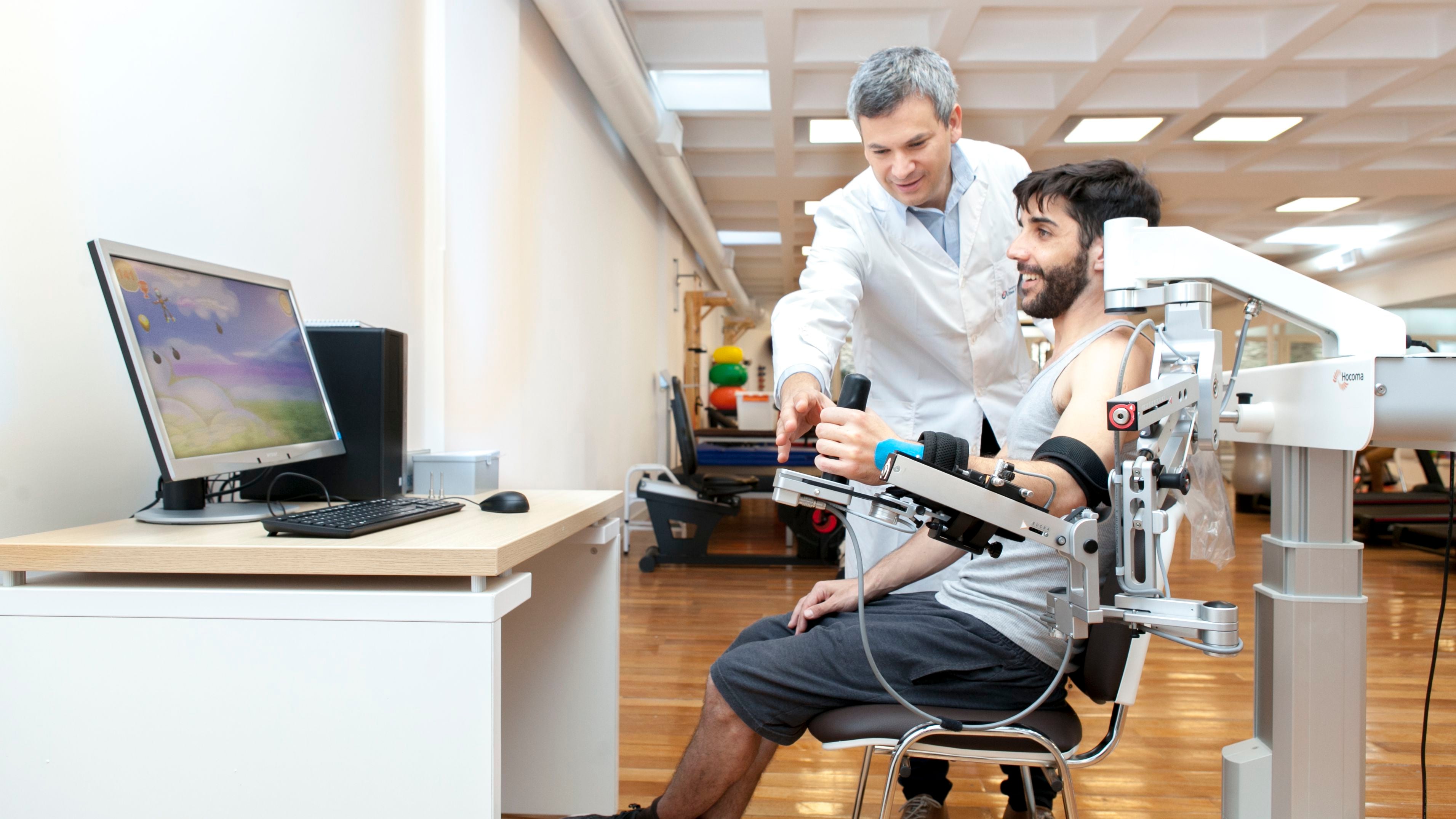
When the brain is injured or sick, the impact on quality of life is crucial. Therefore, neurological diseases are the leading cause of disability in the world.
The treatments that seemed impossible decades ago Thanks to the great advances in science and medicine, to which, today is a reality: all patients suffering from a condition related to a brain pathology, such as Brain Trauma (CRT), Stroke (CVA) or Disease of Parkinson's, you can receive adequate treatment to improve your quality of life. Today, reality teaches us that starting a new life project beyond neurological sequelae is possible thanks to comprehensive and interdisciplinary treatment.
When it comes to brain injuries, it is common to think both about the prevention or control of avoidable risk factors and the need for immediate diagnosis and treatment. However, to a much lesser extent it is taken into account that a specialized stage of neurorehabilitation will be required, focused on the reintegration of the patient from the family, social and occupational point of view.
Every March 23, World Rehabilitation Day is celebrated to raise awareness of the importance of re-education after illness. According to the World Health Organization (WHO), rehabilitation helps children, adults or older people to be as independent as possible in their day-to-day lives and allows them to participate in educational, work or recreational activities or carry out tasks that give meaning to their lives, such as caring for the family.
Globally , an estimated 2.4 billion people have a health condition that benefits from rehabilitation.
Currently, there is a stroke every 9 minutes, more than 90,000 people suffer from Parkinson's disease and the World Health Organization warns that skull trauma is the leading cause of disability in people under 40 years of age.

In this way, many patients, after a brain condition, need a tailor-made and highly specialized recovery program. The goal is to recover the quality of life.
“The leading cause of disability in the world is neurological diseases. Treatment in neurological rehabilitation should be aimed at reacquiring lost skills,” explained Dr. Máximo Zimerman, PhD in Neuroscience and Neurorehabilitation at the University Hospital in Hamburg, Germany, and medical director of the CITES INECO center.
The specialist explained that “the science behind neurorehabilitation is neuroplasticity, and describes the ability of the nervous system to change its structure and functioning as a reaction to various situations and training. This adaptive potential makes it possible to improve compromised functions by strengthening recovery. A coordinated, structured and interdisciplinary approach based on modern paradigms is crucial for this.”

The neurological rehabilitation process must be based on challenging aspects in which the patient has a space to carry out a recreational activity that demands a functional purpose. This type of action allows patients to resume and improve their activities of daily living.
“It is essential to have the support of a professional to learn about existing resources and, above all, not to give up, because there are many possibilities of being able to continue with the life that the patient had before the accident,” said Adriana Fiorino, director of the Occupational Therapy area by INECO
An interdisciplinary treatment tailored to the needs of the patient and focused on short, medium and long term objectives, enables recovery and once again immersed in a new reality with a new life project.
KEEP READING:
Últimas Noticias
Debanhi Escobar: they secured the motel where she was found lifeless in a cistern
Members of the Specialized Prosecutor's Office in Nuevo León secured the Nueva Castilla Motel as part of the investigations into the case

The oldest person in the world died at the age of 119
Kane Tanaka lived in Japan. She was born six months earlier than George Orwell, the same year that the Wright brothers first flew, and Marie Curie became the first woman to win a Nobel Prize

Macabre find in CDMX: they left a body bagged and tied in a taxi
The body was left in the back seats of the car. It was covered with black bags and tied with industrial tape
The eagles of America will face Manchester City in a duel of legends. Here are the details
The top Mexican football champion will play a match with Pep Guardiola's squad in the Lone Star Cup

Why is it good to bring dogs out to know the world when they are puppies
A so-called protection against the spread of diseases threatens the integral development of dogs



